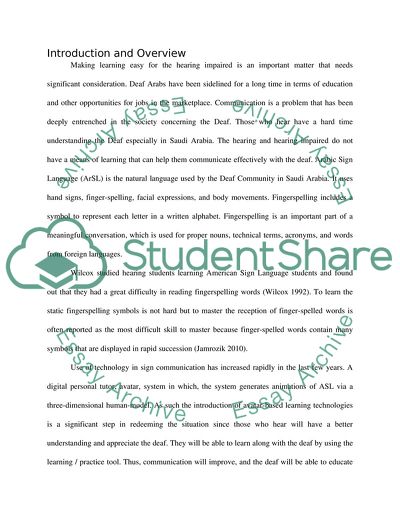Cite this document
(Avatar-Based Fingerspelling Practice Software - Arabic Sign Language Literature review Example | Topics and Well Written Essays - 2750 words, n.d.)
Avatar-Based Fingerspelling Practice Software - Arabic Sign Language Literature review Example | Topics and Well Written Essays - 2750 words. https://studentshare.org/information-technology/1877958-avatar-based-tool-for-arabic-sign-language
Avatar-Based Fingerspelling Practice Software - Arabic Sign Language Literature review Example | Topics and Well Written Essays - 2750 words. https://studentshare.org/information-technology/1877958-avatar-based-tool-for-arabic-sign-language
(Avatar-Based Fingerspelling Practice Software - Arabic Sign Language Literature Review Example | Topics and Well Written Essays - 2750 Words)
Avatar-Based Fingerspelling Practice Software - Arabic Sign Language Literature Review Example | Topics and Well Written Essays - 2750 Words. https://studentshare.org/information-technology/1877958-avatar-based-tool-for-arabic-sign-language.
Avatar-Based Fingerspelling Practice Software - Arabic Sign Language Literature Review Example | Topics and Well Written Essays - 2750 Words. https://studentshare.org/information-technology/1877958-avatar-based-tool-for-arabic-sign-language.
“Avatar-Based Fingerspelling Practice Software - Arabic Sign Language Literature Review Example | Topics and Well Written Essays - 2750 Words”. https://studentshare.org/information-technology/1877958-avatar-based-tool-for-arabic-sign-language.


